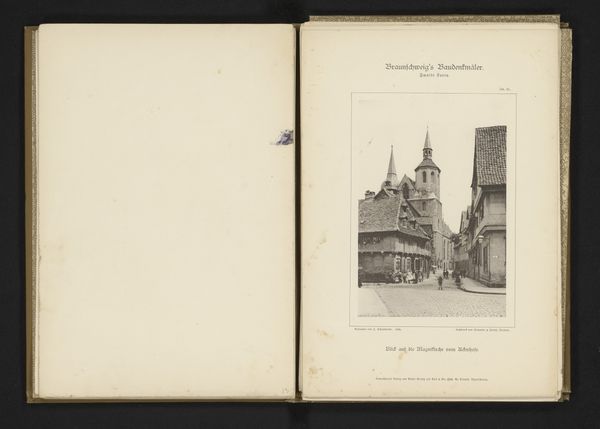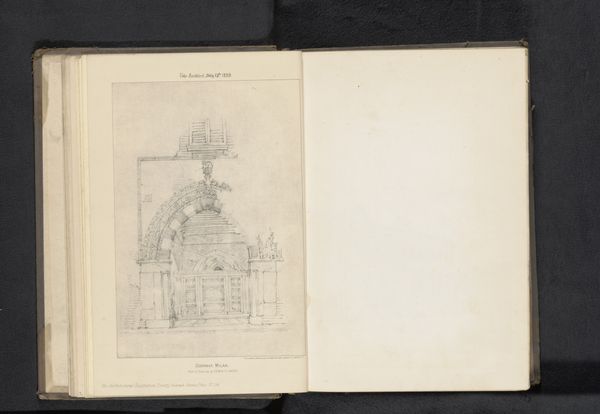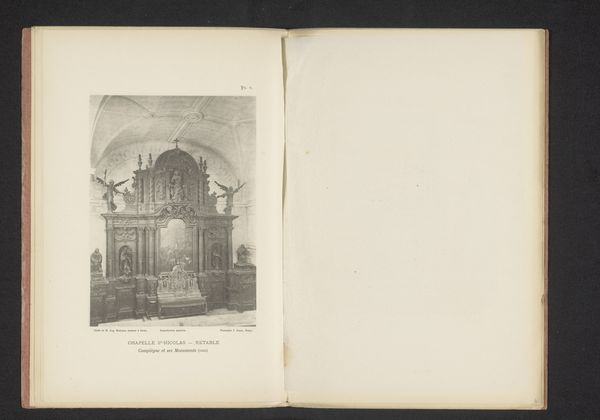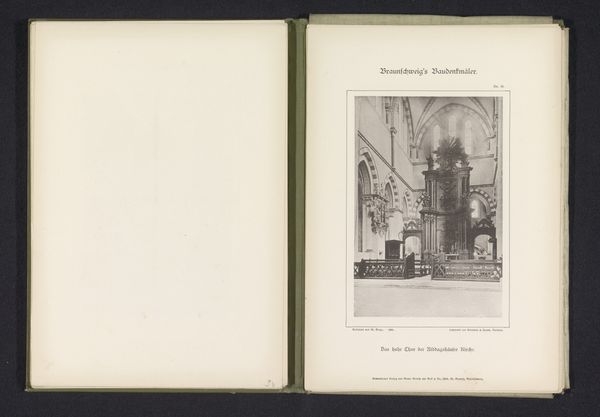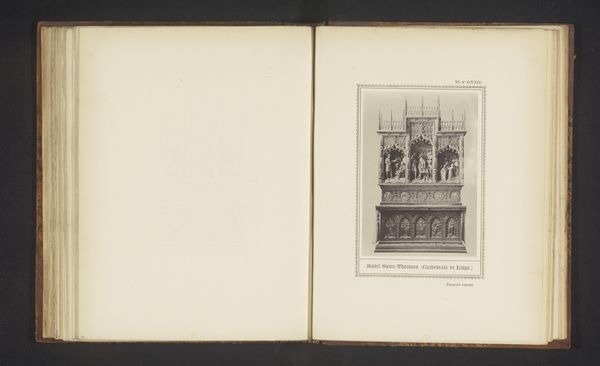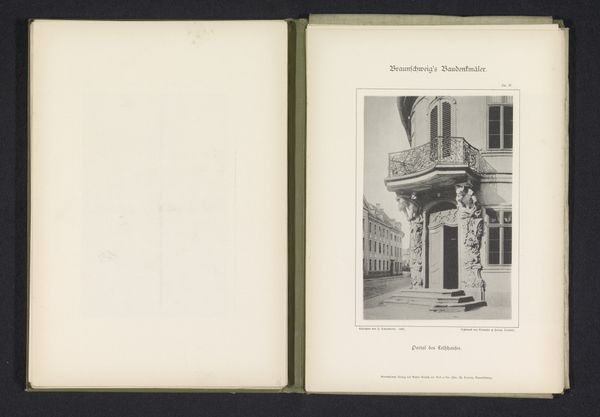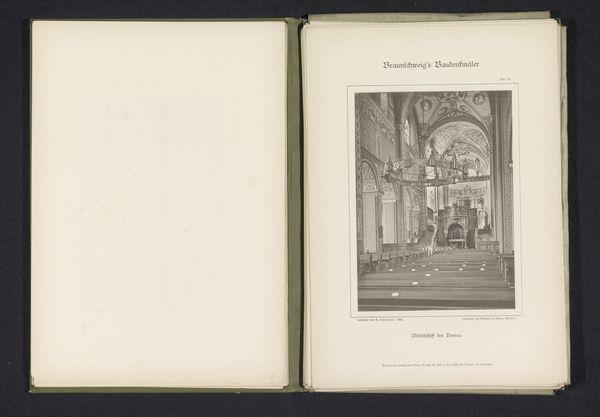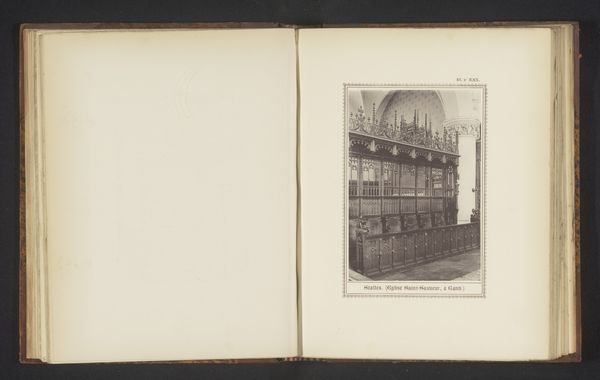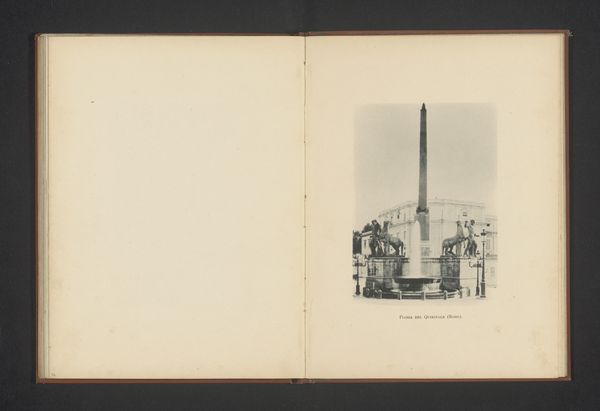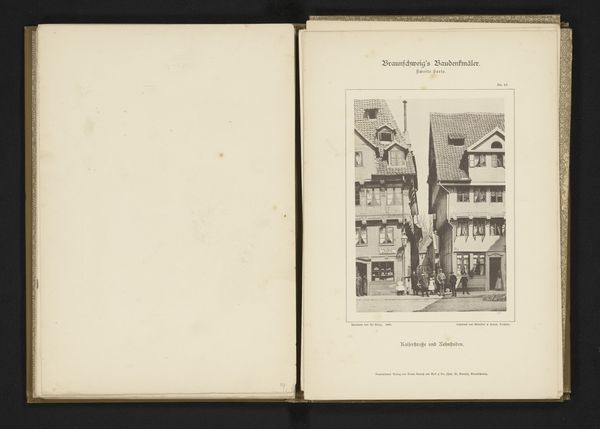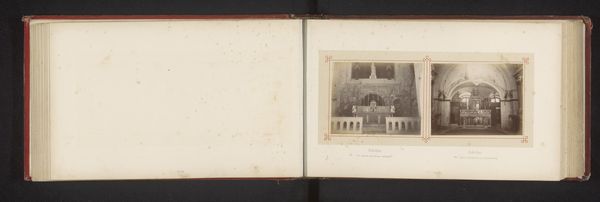
print, photography, engraving, architecture
#
medieval
# print
#
german-expressionism
#
photography
#
engraving
#
architecture
Dimensions: height 158 mm, width 107 mm
Copyright: Rijks Museum: Open Domain
Curator: Immediately striking, isn't it? The intricate detail… this is an image of the Schulenburg Epitaph in the St. Catherine Church in Braunschweig. It dates back to 1893. Editor: It’s imposing. Monumental, almost severe, despite the ornate decoration. I’m drawn to its symmetry, but the starkness of the monochrome gives it a sombre mood. Curator: I'm fascinated by the photographic engraving process. Look closely – the image is captured but still filtered through human labor, an interpreter. There is the tension between reproduction and a unique crafted piece of work. How did this image circulate and what contexts would frame viewing this artwork? Editor: Well, considering the rise of German nationalism and historical preservation movements at the time, this photograph serves to enshrine both religious tradition and a certain vision of German cultural identity. The Schulenburg family was clearly powerful and their lineage important enough to document like this. I’m immediately interested in who the Schulenburgs were and what that could tell us about gender and class power at that moment. Curator: Indeed, let's consider how the act of commissioning, documenting, and distributing prints like these shaped perceptions of power and religious display. The act of photographing and reprinting, turning something solid into a reproducible image adds to that legacy. The photographic engraving process allows one to cheaply yet skillfully display status through capturing impressive family architectural structures, therefore making images of family accomplishments accessible to different economic spheres of society. Editor: Absolutely, the dissemination of these images helps construct and solidify a sense of shared heritage, especially tied to noble families and their associations with civic institutions like this church. What narrative did that push forward, what other histories did it perhaps obscure? And who benefited the most from maintaining that visual record? Curator: I agree; analyzing its function shows us the social forces shaping our perception and interaction with architecture today. Editor: Food for thought. It reminds us how historical documentation can be a potent tool for shaping collective memory.
Comments
No comments
Be the first to comment and join the conversation on the ultimate creative platform.
